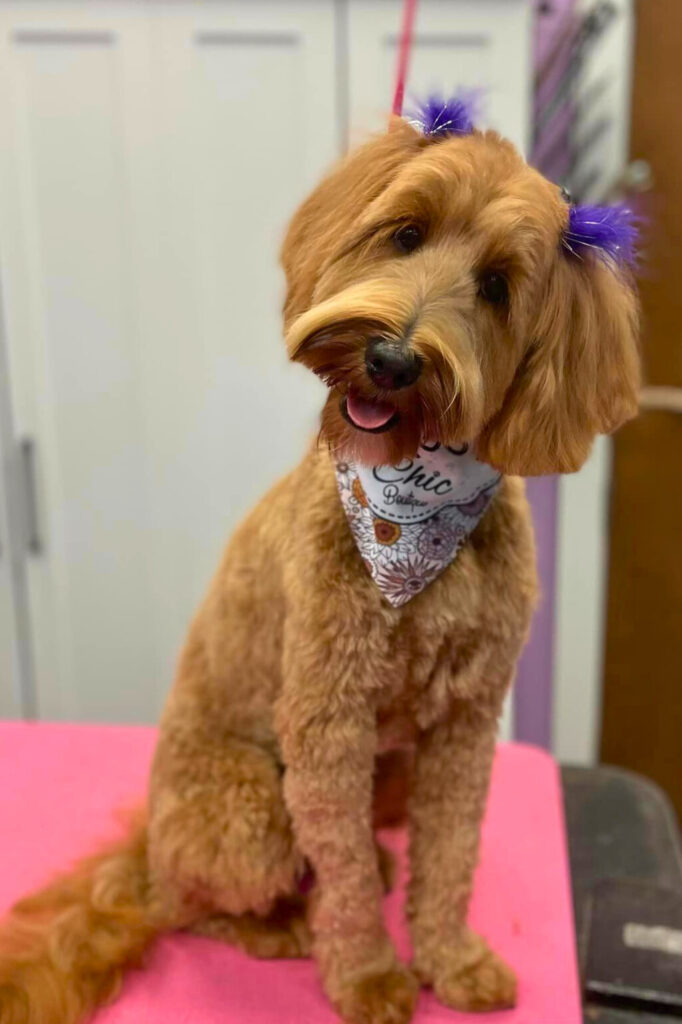If you’re a dog owner, you’re probably familiar with the concept of dog shedding. Dogs shed their fur routinely, leaving behind clumps of hair all over your floors, furnishings, and clothing. But why do dogs shed? Comprehending the reasons behind this natural procedure can help you better look after your furry friend.
Most importantly, dogs shed to maintain their coat’s health. The coat is made up of dead hair and skin cells, and shedding helps get rid of these old cells and gives way for new development. Shedding also makes it easier to control a dog’s body temperature. Dogs have a layer of insulation under their skin that keeps them warm in the winter and cool in the summer season. By shedding, dogs can change this insulation layer to match the weather.
The quantity of shedding a dog experiences can depend upon several elements, including type, age, and health.

Dogs with thick coats or double coats, like Huskies or Golden Retrievers, may shed more than dogs with thin coats. Older dogs or those with health conditions may likewise shed more than more youthful, healthy dogs.
What Causes Shedding?
It’s crucial to keep in mind that some dogs might shed more throughout specific times of the year, such as during seasonal modifications. This is normal, and it’s absolutely nothing to be concerned about. However, if you discover an unexpected increase in shedding, it’s best to seek advice from your vet to rule out any underlying health issues.
It’s likewise worth noting that some dogs might experience “blowing their coat,” which is a natural process where they shed big quantities of fur simultaneously. This typically happens in the spring or fall and can be more typical in types with thick coats. During this time, it’s essential to groom your dog frequently to assist remove loose hair and avoid matting.

Another element that can add to shedding is stress. Dogs that are stressed or anxious might shed more than usual. If you observe an increase in shedding together with other indications of stress, such as pacing, panting, or extreme barking, it’s important to address the underlying reason for the stress and take action to help your dog feel more comfortable.
Particular dietary aspects can also impact shedding. Feeding your dog a well-balanced and healthy diet can help in reducing shedding. Foods abundant in omega-3 fatty acids, such as fish, can assist promote healthy skin and a glossy coat. On the other hand, diet plans that lack certain nutrients can lead to dry, brittle fur and increased shedding.
Hormones likewise contribute to shedding. Hormones like cortisol and thyroid hormones can affect a dog’s hair development cycle and result in excessive shedding.

In some cases, medical conditions like allergic reactions, parasites, or infections can also cause excessive shedding.
How to Manage Shedding?
While shedding is typical and healthy, extreme shedding can be aggravating and produce a mess in your house. Thankfully, there are steps you can take to manage shedding in your furry friend.
Routine Brushing: One of the most reliable methods to handle shedding in dogs is to brush them frequently. Brushing your dog’s coat will remove loose hair, dirt, and dander that would otherwise wind up on your floors, furniture, and clothing. The frequency of brushing will depend upon the type and coat type of your dog. Dogs with longer hair and thick undercoats will need more regular brushing.

Expert Grooming: Professional grooming services can also help handle shedding in dogs. Expert groomers can perform a range of services that will help get rid of loose hair, consisting of de-shedding treatments and undercoat brushing.
Bathing: Bathing your dog can also help to handle shedding. When you give your dog a bath, you will eliminate dirt and loose hair that would otherwise wind up in your home. Be sure to only use a dog-specific hair shampoo and prevent over-bathing, as this can dry your dog’s skin and cause more shedding.
Healthy Diet: A healthy diet is important for keeping your dog’s coat healthy and decreasing shedding. Feeding your dog high-quality food abundant in nutrients, particularly omega-3 fatty acids, can assist in improving their coat’s health and minimize shedding. Seek advice from your veterinarian about the best diet for your dog.
Proper Hydration: Ensure your dog drinks plenty of water. Appropriate hydration is important for a healthy coat and skin.
Manage Stress: As pointed out, stress can result in extreme shedding in dogs. If you notice an increase in shedding together with other indications of stress, such as pacing, panting, or excessive barking, it’s important to resolve the underlying cause of the stress and take steps to make your dog feel more comfortable.

Hypoallergenic Breeds and Shedding
It’s worth noting that some dog types are thought as “hypoallergenic,” suggesting they shed less and perhaps a much better suitable for individuals with allergic reactions. Breeds such as Poodles, Bichon Frises, and Yorkshire Terriers are examples of hypoallergenic dogs. Nevertheless, it’s crucial to note that no dog type is entirely allergen-free, and the level of shedding can still differ within hypoallergenic breeds.
In conclusion, shedding is a natural procedure for dogs, but excessive shedding can create a mess in your house and trigger aggravation for dog owners. You can manage shedding in your dog by taking steps like regular brushing, bathing, and a healthy diet.

UPDATE: It’s also essential to handle stress and think about expert grooming services if required. By taking these actions, you can help keep your dog healthy and comfortable while keeping your house clean and tidy.


